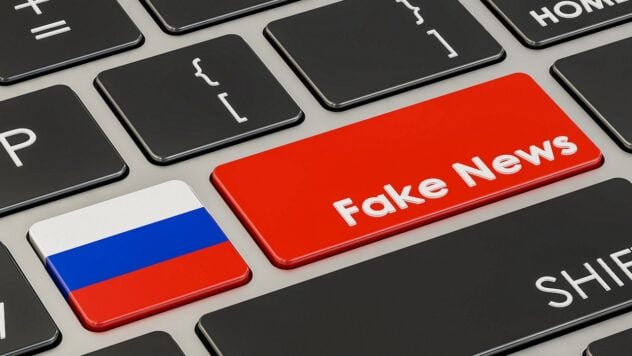
The European Union failed to completely block the flow of Kremlin propaganda after the Russian invasion of Ukraine. The aggressor is still finding ways to circumvent Western sanctions.
Bloomberg drew attention to this.
Thus, at the beginning of a full-scale war, the European Union promised to block Russian propaganda. The bloc has imposed sanctions on Russian-backed propaganda outlets such as RT and Sputnik.
Currently watching
Almost two years after the start of the war, RT.com may not be available in the EU. However, there are a number of less popular mirror sites that publish the same content aimed at undermining allied support for Ukraine.
“We don’t give a damn about your sanctions,” RT editor-in-chief and propagandist Margarita Simonyan said in a commentary to Bloomberg.
Mirror sites and bypassing sanctions
The European Union imposed sanctions against the television company RT on March 2, 2022, banning its content and suspending broadcasts. It was noted that Russia “is engaged in a systematic international campaign of disinformation, information manipulation and distortion of facts in order to enhance the strategy of destabilization.”
The sanctions led to the closure of RT offices in France and Germany. However, Russian propagandists have found different methods to circumvent them. One of them is mirror sites such as swentr.site (or RT News vice versa).
According to WHOIS domain registration directory data, the Sventr website was registered just three days after the sanctions were announced. It is one of at least 19 sites RT uses to spread propaganda in the European Union, according to research group Reset.
Want to rest? Come to Facti.GAMES!
It is noted that Sputnik also operates through mirror sites such as sputnikglobe.com.
While about a dozen Russian media outlets have been subject to EU sanctions during the war, RT and Sputnik have the largest international reach and are actively trying to circumvent restrictive measures.
Russian sanctioned media figures such as Simonyan maintain social media accounts. RT content is distributed in multiple languages on platforms such as X, TikTok, Facebook and Telegram.
In September, the EU called on the owner of the social network X, Elon Musk, to curb the spread of misinformation. The European Commission recognized X as the main carrier of Russian propaganda.
– Sanctions against state media have only partially reduced the Kremlin’s ability to spread disinformation in the European Union. The Kremlin’s propaganda machine is quickly exploiting loopholes in the new norms… The efforts of technology companies to limit the Kremlin’s information war were unsystematic and half-hearted, Felix Carte, director of Reset in the EU, noted in a comment to the publication.
According to a recent US State Department report on the spread of Kremlin propaganda, the Russian Federation often tries to sow doubt. A common strategy for propagandists is to use content from supposedly independent sources and disseminate it through state media and a network of official Russian social media accounts.
For example, in October, a little-known Nigerian website published a fake that the first lady of Ukraine Elena Zelenskaya allegedly bought Cartier products worth $1.1 million. Subsequently, this message went viral using Russian social media channels.
Bypassing sanctions: what they say in the EU
As Vice-President of the European Commission Vera Jourova noted, the EC is aware of the existence of mirror sites with Russian propaganda and is working with member countries on the effective application of sanctions.
– I would like to note that, despite some attempts to circumvent, the sanctions are effective. No one can find these media by randomly switching channels. Internet search engines and news aggregators do not show results from these media, she said in a comment to Bloomberg.
The publication notes that these measures have brought some success in marginalizing the Russian disinformation machine. For example, in October, the Sventr website received almost 3 million visits. This is far from the 141 million that RT.com received, despite being blocked in several markets.

